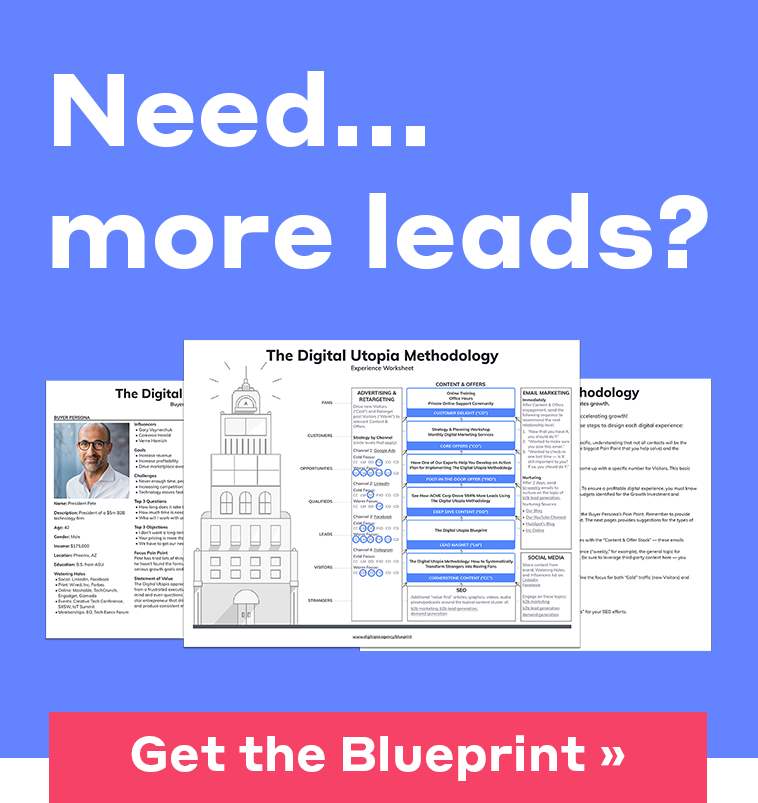3 Content Offerings That Will Help Grow Your Pipeline
by Kendra Uminger | Updated Oct 7, 2022
Picture this…
Your company has successfully used inbound marketing tactics to increase traffic to your website. Cool, it’s working!
But, there’s a problem…
Your website has a bunch of visitors, but those visitors are not effectively converting to leads.
They came, they saw, they conquered, and they left your page without giving you their information.
If your only goal is to get eyes on your site, congrats, you’re finished! I’m willing to bet, however, that your organization has a product or service that you want people to buy.
Am I right?
So, how do you get those valuable visitors to give you their info, thus becoming leads that you can nurture?
With the age-old principle of reciprocity, of course!
We humans are funny creatures. We have social cues and values that dictate our dealings with each other, and even businesses!
Reciprocity is one of the most powerful principles that marketers can leverage. According to Cialdini, people feel uncomfortable taking something without giving anything in return….and they’ll do pretty much anything to alleviate that discomfort. That’s where the smart content marketer comes in.
One way to trigger the principle of reciprocity is to create something called a lead magnet. DigitalMarketer defines a lead magnet as, “an irresistible bribe offering a specific chunk of value to a prospect in exchange for their contact information.”
Offer them valuable content for the small price of their contact information.
You won’t be some strange entity trying to get their information – instead, you’ll be the source of the information they want. And, because reciprocity drives so many of us, the prospect will feel comfortable giving you their contact details. After all, you’ve given them something (or will give them something) of value.
A word of caution: don’t ask for too much contact information. The general philosophy is that the more valuable the offer, the more information you can ask for. Keep that in mind so you don’t scare people away.
Okay, cool. But what is valuable content?
It’s content that’s valuable, duh! Okay, I’m kidding. But seriously, there are lots of ways you can create value for a prospect. The typical rule of thumb: Solve a specific problem or answer a specific question. Specificity is key here.
3 examples of valuable content offerings:
1. Checklists
Checklists are great for breaking down a complex or daunting task. Let’s say you’re a digital marketing firm. Your ideal customer is a small to mid-sized company with a small marketing department. You could publish a checklist that walks your potential customer through the process of setting up a cohesive social media campaign.
A checklist, while valuable, is not as granular as other types of content. So, the form people need to fill out should only require fields for their names and email addresses.
2. How-to Guides
How-to guides are perfect for visitors who are familiar with your brand, product, and/or service. According to HubSpot, at this point, the customer has defined their problem and is on the search for ways to fix it.
For this example, let’s pretend you own a chain of hardware stores. Your buyer persona is Jeff. He’s a middle-aged homeowner who likes to do home improvement projects on his own. A valuable piece of content for Jeff would be a DIY step-by-step guide on how to refinish kitchen cabinets.
This lead magnet offers the customer more value, so your form can request more information, like their phone number or zip code.
3. Toolkits
Put down the wrench, it’s not that kind of toolkit. The toolkits I’m talking about are virtual, of course. The best way to describe them is to say that they’re a digital compilation of a bunch of resources your potential client may need. They’re great for establishing your expertise and trustworthiness.
Say you’re a financial institution that specializes in mortgage lending. Your toolkit could be “The Home Buying Toolkit: Everything You Need to Know to Buy a Home in 2021.” The toolkit could include recommendations on real estate websites, credit-improvement tips, information about interest rates, etc.
Because of the toolkit’s high value, you can qualify your leads even more on the download form. Try asking for their address, profession, education level, etc.
Remember, there are so many ways to create irresistible content for your potential customers. This blog has only scratched the surface of valuable content offerings.








